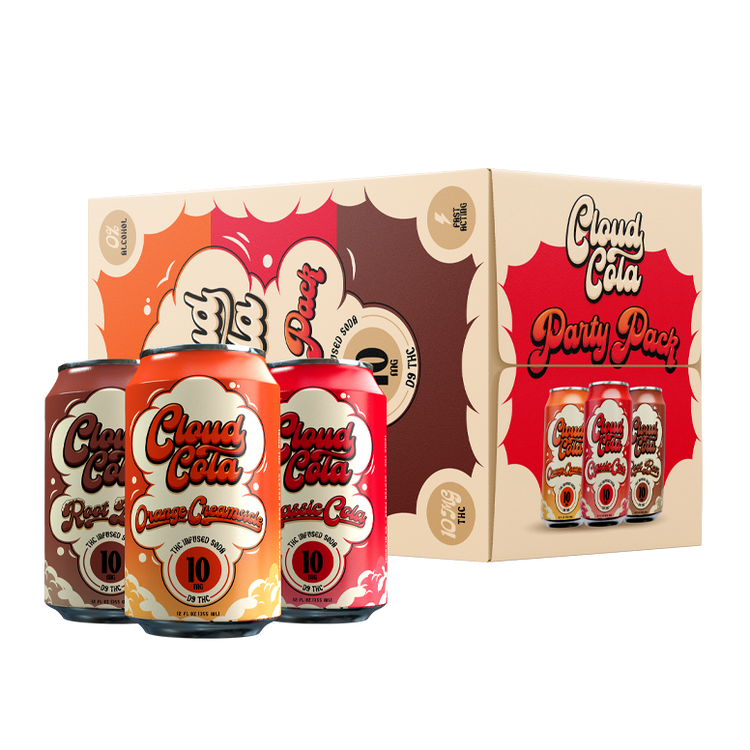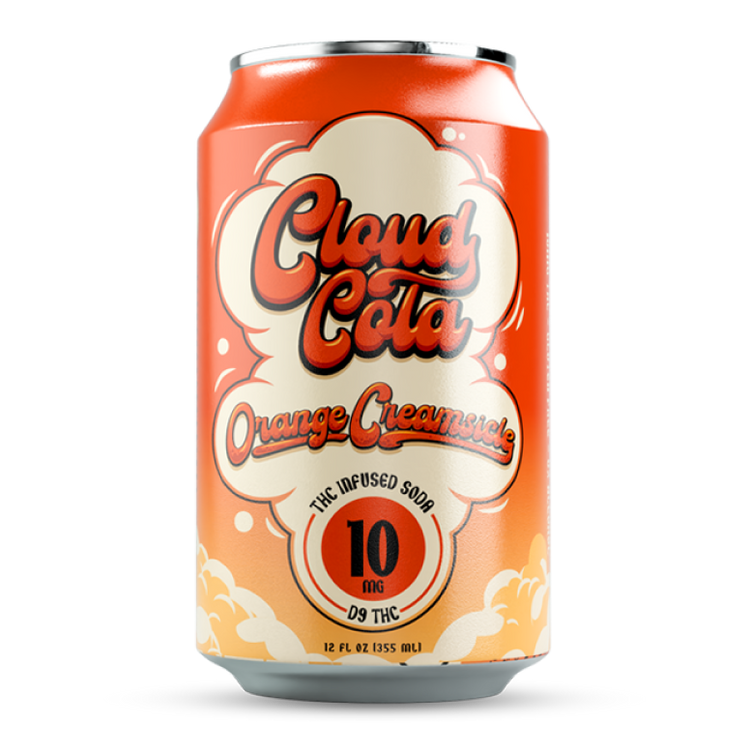THC Soda That Tastes Like The Real Thing
May 29, 2025
Manufacturing Process
Creating a THC soda that truly captures the flavor and experience of traditional sodas requires a meticulous manufacturing process.
Extraction and Purification
Extraction and purification are crucial initial steps in crafting a THC soda with authentic taste. High-quality cannabis flower or concentrate is first extracted using solvents like ethanol or CO2 to isolate the cannabinoids, including THC. This extract is then meticulously purified through techniques such as distillation and chromatography to remove unwanted plant matter, lipids, and other impurities, ensuring a clean and potent product.
Following purification, the concentrated THC is carefully blended into a specially formulated soda base. This base typically consists of water, sugar or artificial sweeteners, carbonation, and natural or artificial flavors designed to mimic traditional soda profiles. The exact proportions of each ingredient are carefully calibrated to achieve the desired flavor balance, sweetness level, and potency.
Flavoring and Carbonation
The manufacturing process for THC soda involves several key stages. First, the THC needs to be extracted from the cannabis plant using methods like ethanol or CO2 extraction. This extract is then purified to remove any unwanted compounds, resulting in a concentrated THC solution.
Next, this purified THC is carefully added to a specially formulated soda base. This base typically comprises water, sweeteners (sugar or artificial), carbonation, and flavorings that aim to replicate the taste of popular sodas. The precise ratios of each ingredient are meticulously adjusted to achieve the desired flavor profile, sweetness level, and THC potency.
THC Infusion
Once the THC-infused soda base is prepared, it undergoes rigorous quality control testing to ensure consistency and safety. This may include analysis for cannabinoid content, pH levels, microbial contamination, and overall organoleptic properties (taste, aroma, appearance).
The final stage involves packaging the THC soda into sealed containers, typically cans or bottles, to protect its freshness and potency. These containers are then labeled with relevant information, including dosage instructions, warnings, and storage recommendations.
Legality and Regulation
The emerging market for THC-infused beverages presents unique legal and regulatory challenges. States are grappling with how to classify and regulate these products, balancing consumer demand with public safety concerns. This includes determining appropriate age restrictions, labeling requirements, potency limits, and distribution channels.
State-Specific Laws
The legality and regulation of THC soda vary significantly from state to state. Some states have legalized the sale and consumption of cannabis-infused beverages, while others have strict prohibitions. States that have legalized THC sodas often establish specific regulations regarding production, labeling, packaging, and distribution. These regulations may include requirements for licensing, testing, and age verification.
For example, California requires manufacturers to obtain licenses from the Bureau of Cannabis Control and adhere to strict standards for product quality and safety. The state also mandates clear labeling with dosage information and warnings about potential health effects. Conversely, states that have not legalized THC sodas may consider them illegal under their existing drug laws.
The evolving legal landscape surrounding cannabis products continues to shape the regulatory framework for THC soda. Businesses operating in this industry must stay informed about state-specific laws and regulations to ensure compliance.
Safety Standards

The production of THC soda, while mirroring traditional soda manufacturing processes, navigates a complex legal and regulatory landscape.
Safety standards play a crucial role in ensuring the quality and consumer safety of THC soda. Manufacturers must adhere to stringent guidelines for ingredient sourcing, extraction methods, and product testing.
Regulatory bodies often set limits on permissible levels of THC content, mandate specific labeling requirements, and enforce packaging standards to prevent accidental ingestion, especially by children.
Compliance with these regulations is essential for businesses operating in the THC soda market to avoid legal repercussions and protect public health.
Health Effects
The emergence of THC-infused beverages, particularly those mimicking traditional sodas, has sparked interest but also raises important health considerations. Understanding how these products are manufactured and their potential effects is crucial for consumers navigating this evolving market.
Psychoactive Effects of THC
THC, the psychoactive compound in cannabis, can produce a variety of effects when consumed. These effects can include euphoria, relaxation, altered perception, increased appetite, and impaired memory and coordination. The intensity of these effects can vary depending on factors such as the dose of THC consumed, individual tolerance, and method of consumption.
In addition to its psychoactive effects, THC can also have short-term health effects. These may include dry mouth, red eyes, increased heart rate, and anxiety. Long-term use of THC has been linked to potential risks such as respiratory problems, cognitive impairment, and addiction.
It’s important for consumers to be aware of the potential risks associated with THC consumption and to use these products responsibly. Start with a low dose and monitor your body’s response. Avoid driving or operating machinery after consuming THC, and be mindful of potential interactions with medications.
Potential Side Effects

THC, the psychoactive component in cannabis, can induce a range of effects upon consumption. These may encompass euphoria, relaxation, altered perceptions, heightened appetite, and impairments in memory and coordination. The intensity of these effects is contingent on factors such as the dosage of THC consumed, individual tolerance levels, and the method of consumption.
Apart from its psychoactive properties, THC can exert short-term physiological effects. These may include dryness of the mouth, reddening of the eyes, an accelerated heart rate, and feelings of anxiety. Prolonged use of THC has been associated with potential long-term risks such as respiratory issues, cognitive decline, and the development of addiction.
Consumers should be cognizant of the potential risks inherent in THC consumption and exercise responsible use. Begin with a low dosage and carefully observe your body’s reaction. Refrain from driving or operating machinery after consuming THC, and be mindful of any potential interactions with medications.
Long-Term Health Impacts
The production of THC soda, while mirroring traditional soda manufacturing processes, navigates a complex legal and regulatory landscape.
Safety standards play a crucial role in ensuring the quality and consumer safety of THC soda. Manufacturers must adhere to stringent guidelines for ingredient sourcing, extraction methods, and product testing.
Regulatory bodies often set limits on permissible levels of THC content, mandate specific labeling requirements, and enforce packaging standards to prevent accidental ingestion, especially by children.
Compliance with these regulations is essential for businesses operating in the THC soda market to avoid legal repercussions and protect public health.
The emergence of THC-infused beverages, particularly those mimicking traditional sodas, has sparked interest but also raises important health considerations. Understanding how these products are manufactured and their potential effects is crucial for consumers navigating this evolving market.
- Euphoria
- Relaxation
- Altered perception
- Increased appetite
- Impaired memory and coordination
In addition to its psychoactive effects, THC can also have short-term health effects. These may include dry mouth, red eyes, increased heart rate, and anxiety. Long-term use of THC has been linked to potential risks such as respiratory problems, cognitive impairment, and addiction.
It’s important for consumers to be aware of the potential risks associated with THC consumption and to use these products responsibly. Start with a low dose and monitor your body’s response. Avoid driving or operating machinery after consuming THC, and be mindful of potential interactions with medications.
Consumer Appeal and Market Trends
The market for cannabis-infused beverages is booming, with consumers seeking novel and appealing ways to enjoy the benefits of THC. A key trend in this space is the development of THC sodas that aim to replicate the taste and experience of traditional soda. This presents a unique challenge: capturing the authentic flavor of popular sodas while ensuring a consistent and enjoyable THC experience.
Target Demographic
The target demographic for THC soda is likely to be adult consumers who are already familiar with cannabis products and seeking convenient and flavorful ways to consume THC. These individuals may be attracted to the social acceptability and ease of consumption that THC soda offers compared to traditional smoking or vaping methods. The appeal lies in the familiar taste profile, allowing for a more discreet and enjoyable experience.
However, it’s important to note that this is a developing market with evolving consumer preferences. Factors such as age, lifestyle, and cannabis consumption habits will all influence the specific target demographic for different brands of THC soda.
Flavor Profiles and Packaging Design
The creation of a THC soda that truly mimics traditional sodas requires a meticulous process. Extraction and purification are initial steps to isolate THC from high-quality cannabis flower or concentrate using solvents like ethanol or CO2. This extract is then purified through techniques such as distillation and chromatography to remove impurities, ensuring a clean and potent product.
Next, this concentrated THC is carefully blended into a specially formulated soda base. This base typically consists of water, sugar or artificial sweeteners, carbonation, and natural or artificial flavors designed to replicate traditional soda profiles. The precise proportions are carefully calibrated to achieve the desired flavor balance, sweetness level, and potency.
The target demographic for THC soda likely includes adult consumers who are already familiar with cannabis products and seeking convenient and flavorful ways to consume THC. They may be drawn to the social acceptability and ease of consumption that THC soda offers compared to traditional methods like smoking or vaping.
Packaging design plays a crucial role in attracting consumers and conveying the product’s identity. Modern, eye-catching designs with vibrant colors and appealing graphics can help THC soda stand out on shelves. Packaging should also clearly communicate dosage information, warnings, and brand values.
Flavor profiles are essential for capturing consumer appeal. THC sodas need to offer a variety of enticing flavors that align with popular soda preferences while ensuring the taste of THC doesn’t overpower the beverage. Classic cola, citrus-based options, fruit punches, and even unique flavor combinations can all be explored.
The market for cannabis-infused beverages is evolving rapidly, with new products and trends emerging constantly. Staying informed about consumer preferences, legal regulations, and advancements in production techniques will be crucial for success in this dynamic industry.
Impact on the Cannabis Industry
Consumer appeal and market trends are driving significant innovation in the cannabis industry, particularly within the burgeoning sector of THC-infused beverages.
One major trend is the development of THC sodas that aim to replicate the taste and experience of traditional sodas. This appeals to consumers seeking a familiar and accessible way to consume THC, offering a potentially more discreet and enjoyable alternative to smoking or vaping. The target demographic for these products likely includes adult consumers already familiar with cannabis who desire convenience and flavorful options.
Successfully capturing consumer interest in this space requires meticulous attention to detail:
* **Authentic Flavor:** Replicating the taste profiles of popular sodas is crucial. Brands must carefully balance THC integration with desired flavor profiles, ensuring the THC doesn’t overpower the beverage.
* **Convenience and Accessibility:** THC soda should offer a convenient and easy-to-consume format, appealing to a wide range of consumers.
* **Packaging Design:** Eye-catching packaging with modern designs and clear dosage information is essential for attracting attention and conveying brand identity.
As the market evolves, understanding consumer preferences, legal regulations, and production advancements will be crucial for success in this dynamic industry.
Find Weed-Infused Sparkling Beverages at Great Prices
Keep reading here for more
Browse the whole blog
- The Top THC Seltzer Brands Right Now - December 7, 2025
- The Role Of Collagen Stimulation In Bum Filler Results - December 4, 2025
- The Evolution Of Vista Edge Vape: What’s New In The Latest Version? - December 1, 2025
